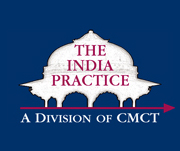Indian IT professionals often seem to become Americanized within months of landing in the US. But the “honeymoon” phase soon gets over, giving way to disorientation, loss of confidence and even alienation. How can this be overcome?
When Indian IT professionals come to work in the US, there is usually a very rapid surface adjustment. In most cases, they are swiftly inducted by their companies into the specifics of getting established in their jobs, and how to go about dealing with visa issues, housing and utilities, and all the various issues anyone new to the area must cope with.
The informal grapevine or network of those who have come from India before passes on tips about matters such as how to manage food as a vegetarian, how to find a temple or Indian community center in the local area, and how to integrate into the local Indian networks. Within a short period of time, they are able to navigate these practical matters with ease.
At work, they are almost immediately plunged into their jobs and work teams, and learn very quickly how to perform their tasks in the immediate company context. For some people, the adaptation to more American styles of dress comes fairly quickly too, for women as well as men, and more expansive American-style posture and body movements (e.g. the American “Hi!” and handshake) are also adopted within a relatively short time. Natural curiosity and eagerness also leads to a swift learning about the immediate area and how to get around. On the whole, the initial adaptation occurs with relative ease.
The irony is that the above-mentioned “honeymoon” phase only lasts for a 2-3 month period. Then comes the brutal reality that for anyone moving from one culture to another, there is an adjustment process that moves from the initial euphoria through a period of disorientation, loss of confidence and even alienation.
The Indian professional suddenly begins to fear that the initial transition that seemed so easy and natural was just a superficial phase and that a lot more needs to be learned to make a more lasting transition into the new culture. Only then one is able to adjust to the new cultural environment at a deeper and more satisfying level.
The adjustment issues Indian IT professionals face at this deeper level are many:
- Learning to communicate more effectively with Americans, both orally and in writing.
- Adapting to the American concept of time.
- Relating to bosses and peers in a more independent and egalitarian way.
- Developing a more methodical approach to problem solving, individually as well as in multicultural teams.
- Understanding American managerial styles.
- Strengthening leadership and management skills in the American cultural context.
- Going beyond adjusting at a superficial level to a fuller and more satisfying integration with the wider society beyond the workplace.
These are deep cultural learnings, and don't happen overnight, or without help. Those who succeed best in the cross-cultural transformation are those who are the beneficiaries of good orientation and mentoring, plus support structures, cultural transition training and personal determination.
© Karine Schomer. All Rights Reserved. Originally published in Siliconindia Investor Entrepreneur Network On-line. Permission to reprint is granted, provided the article and byline are printed intact, with all links visible and made live if distributed in electronic form.
Karine Schomer, PhD is President of Change Management Consulting & Training, LLC, and leads The CMCT India Practice, specializing in cross-cultural training and management consulting for doing business with India, competitive advantage through cross-cultural awareness, business etiquette and protocols, cross-cultural communication and teamwork skills, outsourcing management best practices, and offshore team leadership strategies. For more learning resources, check The Working and Managing Across Cultures Blog.



